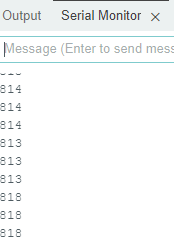This week, Jeff and I researched the different hardware we can use in our project. We decided we wanted to use a unit that had an integrated LIDAR and camera to make things simpler. We were initially thinking about using a unit called Astra from Orbbec, but decided against it as the user guide and documentation for it was sparse and hard to navigate. We also found that it also had questionable reviews on Amazon. Because we wanted to use something with established documentation, we decided on an Intel unit, the Intel RealSense Depth Camera D415, and found a graph that displayed its depth RMS error, which seemed somewhat acceptable. However later when we were looking at the ECE Inventory, we found an even better item, the Intel RealSense Lidar Camera L515, which also seems to satisfy our accuracy requirements. The depth accuracy of the L515 is shown below. On the list we also found a Raspberry Pi, so we filled out the request form and notified our TA.

I looked into how to use pre-existing APIs to calculate the azimuth/altitude of the sun, to use for calculating the area of effect of the sun, but I was very inefficient in my approach, as I should’ve thought there was a Python library for this. At first I tried to make GET requests to suncalc.org, but the values we needed weren’t directly in the HTML. When I looked up suncalc APIs online, at first I only saw the JavaScript API, so I spent some time trying to find out how to run JavaScript in Python (using the js2py library), but it kept giving me errors on how it couldn’t link the required node modules for the suncalc API. In the end, I just found a Python library that gives us these values based on time and location, and used another library called geopy to find latitude/longitude based on an address. The short code is below. I ended up not putting it on the GitHub repository for now, as it’s only a very preliminary venture into our project, and it’s very simple (I was just being stupid).

Our progress is roughly on schedule.
The deliverables for the next week I plan on working on is working with Dianne on the Sun Position calculating API, and start the implementation of our area of effect API. I will also work on the design review/report and presentation, as my group members and I have decided that I will be in charge of the next presentation. I will also help my group members in making more in-depth schematic diagrams for our project.












 (My proposed LAoE Algorithm)
(My proposed LAoE Algorithm)




